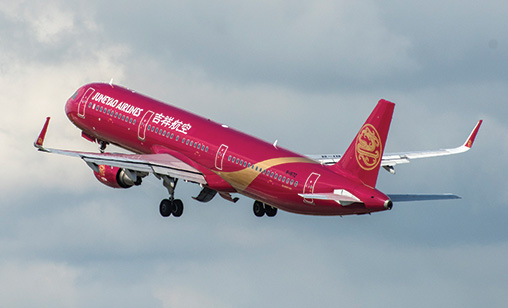News Backgrounder
Star loosens rules to attract new members
June 1st 2017
Doomsayers have long predicated the golden years of global airline alliances were over, but Star begs to differ. It believes its leaner Connecting Partner Model (CPM) and digital transformation in the industry will ensure its continuing success. Read More »
Star board chairman and CEO of Copa Airlines, Pedro Heilbron, told Orient Aviation at the alliance’s 20th anniversary ceremonies in Frankfurt last month that gaps remain in the alliance’s network, most notably in Australia and Russia, but attracting new members was not a priority. “There are not many airlines interested in joining that Star is interested in having join, although membership is not closed,” Heilbron said.
 |
Star’s recent membership focus has been the CPM, which allows regional, low-cost or hybrid airlines to be cost efficiently linked to the Star Alliance network without being full members. Juneyao Airlines became the first CPM member to be inducted into Star, at its home base in Shanghai on May 23.
“The CPM was designed to recapture market share lost to low-cost and hybrid carriers. It also has allowed us to grow more strategically in certain locations,” Star CEO, Jeffrey Goh, told Orient Aviation in Shanghai.
“No more than a handful” of other airlines were likely to become Star CPs in the next two years, Goh said. Air India Express, SilkAir and THAI Smile would make ideal candidates, but Goh said they could only become members if they added value to the Star network.
“When Shanghai Airlines left Star Alliance, we and Air China thought that Air China would add connectivity from Shanghai. But Pudong, and Hongqiao in particular, are starved of slots. We have not achieved what we had hoped in Shanghai so Juneyao became an interesting proposition,” Goh said. Air China sponsored Juneyao’s CPM membership.
A former IATA lawyer, Goh said things looked “a little more flexible” at the new airport in Beijing. “As soon as the CAAC (Civil Aviation Administration of China) announced who was moving to the new airport, we and Air China established a working group with BCIA (Beijing Capital International Airport). It is planned that China Eastern and China Southern Airlines will move to Daxing but the Star carriers will remain at BCIA.
Goh said ‘Star Gold Track’ priority services were part of the discussion with BCIA, but the talks involved customs and border authorities which complicated matters. “The airport authorities need to understand that this is part of the seamless experience we need to offer to our customers. There is no point putting an alliance in one terminal if the process does not work,” Goh said.
Goh said “there were no airlines in Russia that make sense for us. We are not going to recruit an airline just for the sake of it”.
Star regards its coverage as improving in Australia. “It’s almost the backyard of Singapore Airlines and Air New Zealand. Air China is launching a lot of flights into Australia too,” Goh said.
The Star chief dismissed persistent rumours that Etihad Airways would join the alliance, despite Etihad’s warming relations with Star founding member, Lufthansa. “A lot of these developments are on the aviation side – MRO, catering and other services,” Goh said.
“On the airline side, it is still limited. Lufthansa and other Star member carriers will work with Etihad on an exceptional basis because Etihad goes to places that some of our members don’t. When it comes to full membership, that is a long road, somewhere further.”
Star’s immediate focus is transforming the 20-year-old alliance into an organization that uses digital technology to deliver on the seamless service promise.
“We want to be much more focused on our customer proposition. They expect a seamless and trouble free journey,” he said. Star carrier front line employees now have access to inter-Star feeder and connecting flight information. Until recently, these transactions at times required calling the other airline involved in rebooking a journey.
The alliance has introduced a baggage hub system that tracks bags across alliance member airlines. It also plans improvements in retroactive mileage claims and check-in processes.
Star carriers fly more than 690 million passengers a year. Asia-Pacific members are Air China, Air India, Air New Zealand, All Nippon Airways, Asiana Airlines, EVA Airways, Shenzhen Airlines, Singapore Airlines and Thai Airways International.